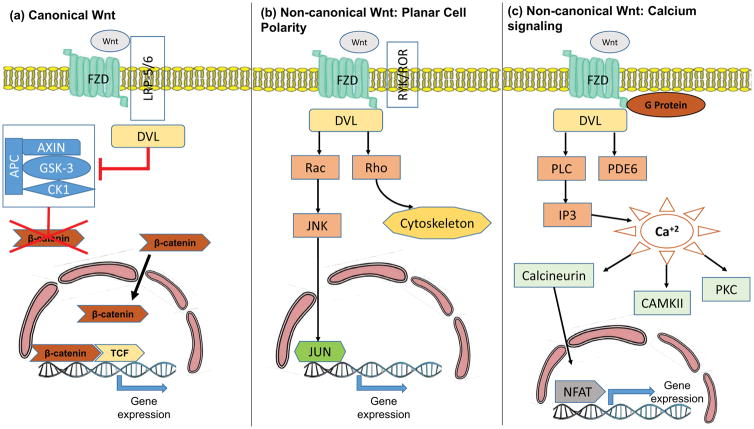Fig. 1.
Wnt signaling pathways.
(A) The canonical pathway is activated once Wnt binds to the frizzled (FZD) receptor and LRP-5/6 co-receptor, thus recruiting disheveled (DVL) protein that inhibits the β-catenin destruction complex. Consequently, β-catenin accumulates in the cytoplasm and diffuses into the nucleus, binds to other transcription factors and activates gene expression. The non-canonical pathways (A and B) do not involve β-catenin. The planar cell polarity pathway (B) is activated once Wnt binds to FZD and the RYK/ROR co-receptor recruiting DVL and resulting in activation of the Rho and Rac signaling cascades. This causes cytoskeletal modifications and alteration in gene expression via the JNK pathway. The calcium signaling non-canonical pathway (C) involves Wnt binding to a G-protein coupled FZD that results in activation of phopholipase C (PLC) and phosphodiesterase 6, this leads to inositol triphosphate (IP3) production and stimulation of intracellular calcium release. The calcium cascade involves activation of CAMKII, PKC and alteration in gene transcription via the calcineurin-NFAT mechanism.

